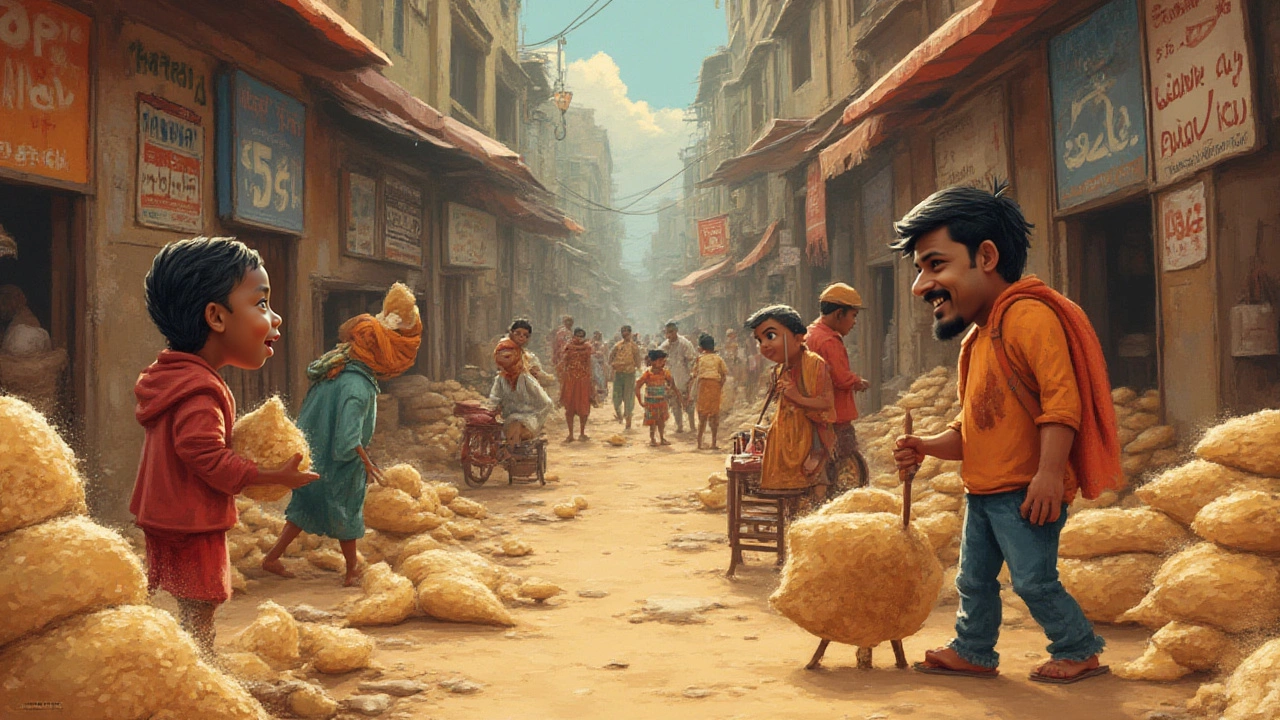Imagine putting everything on the line to grow or sell rice, only to get ambushed from every angle. The rice business looks simple—just seeds, sun, and some hard work, right? Not even close. Farmers sweat over unpredictable weather, traders face wild global prices, and millers risk a lot when a single batch goes bad. On top of that, you’ve got pests, scams, floods, supply chain chaos, and more. Want to know what nightmares stalk folks in the rice game, and what really keeps them awake at night? Strap in. From brutal losses to crazy surprises, I’m spelling out every risk you’ll face if rice is your business—and what you can do to beat the odds.
Natural Disasters and Weather Surprises
Ask any rice farmer in Bangladesh or Arkansas, and you’ll hear the same thing: nothing ruins your year like bad weather. Rice might seem tough, but it doesn’t stand a chance against floods, droughts, or storms rolling in at the wrong time. For example, in 2023, Vietnam’s Mekong Delta—which pumps out a huge chunk of the world’s rice—was hammered by drought followed by sudden heavy rains. That one-two punch dropped their yield by over 15%. Imagine budgeting for tons of harvest and coming up short.
Climate weirdness doesn’t just kill crops. Sometimes, just a sudden rain at the wrong moment causes a fungus explosion, like rice blast disease. A single outbreak in India in 2021 wiped out a tenth of the season’s crop in affected villages. Hurricanes do the same in the U.S. Gulf Coast, flooding everything with seawater and making soil useless for years. If you’re processing or trading rice, these things mean suddenly there’s not enough grain to fill contracts or operate mills. Is there a silver lining? Farmers now use drought-resistant seeds, invest in better water management, and some group together for crop insurance. But those fixes only help so much. When Mother Nature loses her temper, all bets are off.
Price Volatility and Market Swings
The price you buy rice for today might be wildly different in a month. Global rice prices dance up and down like crazy. In 2022, prices shot up nearly 30% after India (the world’s biggest rice supplier) restricted exports due to poor monsoon rains. Back in 2008, rice prices more than doubled in just a few months, fueling riots in dozens of countries.
These shocks hit everyone, from small farmers holding back harvests hoping for better prices, to giant millers holding warehouses filled with grain worth millions. Got optimistic and bought big at a high price? If demand slumps or governments suddenly drop import tariffs, you’ll be left holding costly inventory as prices sink. Sure, traders use all sorts of hedging tricks, forward contracts, and futures to protect themselves, but in many countries those financial tools don’t exist or are too expensive for small operators. If you time the market wrong, one bad move can wipe you out.
Why all the drama? Rice is the daily food of half the world’s people, so when production looks shaky, countries panic. Asian governments especially are famous for slamming the brakes on exports overnight to calm local markets, or flooding the market with stockpiles, crushing prices. Anyone in the rice business must become a sleuth—following weather updates, government announcements, and global shipping movements. If you think this sounds stressful, you’re right. But keeping your ears open for market shifts can be the first line of defense.

Pests, Diseases, and Storage Nightmares
If the weather doesn't get you, bugs and diseases just might. Think rice is safe in the barn? Guess again. Insects like rice weevils or rodents can gut your warehouse in months, leaving sacks filled with dust and droppings. The Philippines loses about a quarter of stored rice to storage pests every single year. And once a shipment is infested, nobody wants it—instant write-off.
Mold and fungus create another mess. If stored rice gets humid, say from a leaking roof or poor ventilation, aflatoxins grow. These are nasty toxins that can make people sick or even cause cancer. The FDA in the US sets strict limits for aflatoxins and will reject any import that tests positive—forget your profits.
And then there’s bacteria and plague-like diseases inside the paddies. For example, bacterial leaf blight and rice blast can destroy crops from the roots up. In 2021, Thailand reported over $2.3 billion in crop losses from disease and pests. Some farmers bounce back by rotating crops, using resistant varieties, or spraying targeted pesticides. But all those come with either a cost or a risk to health and the environment. Simple tip: always use clean, dry storage and don’t stack sacks directly on the ground. Little changes like that can save a lot when running a rice business.
Supply Chain Disruptions and Logistics Hiccups
You can grow or buy all the rice you want, but if you can’t move it, you’re toast. Rice is heavy, bulky, and has to reach markets fast after harvest. In 2023, port closures in Nigeria due to political protests left thousands of tons of rice to rot while ships waited offshore. One stuck truck, one broken bridge, or a paper jam at customs can cause chaos up and down the supply chain.
Poor roads in Cambodia, for example, mean rice from one region takes forever to reach port. Rainy season turns roads to mud, and bags of rice mold waiting for trucks. Shipping rates have also doubled since COVID-19, squeezing profit margins tight. And let’s not forget paperwork: mismatched documents, wrongly labeled cargo, or missing stamps have caused rice shipments to be seized or delayed for weeks. If you’re exporting, dealing with the paperwork can be maddening, especially if port officials expect a bribe to “unstick” your batch.
Warehouse management sounds boring, but it can kill your business dead. If you overbuy without storage, you sell at fire-sale prices or watch as pests and mold move in. Tracking inventory properly, using temperature- and humidity-controlled storage, and lining up reliable shipping partners can make or break your business. Truck breakdown? Power outage? If you don’t have a backup plan or solid contacts, everything can spiral out of control.

Fraud, Scams, and Financial Pitfalls
You might think the worst risk is in the fields, but sometimes it’s behind a desk or on the other end of an email. Fraud is a real threat in the rice world. A classic trick is “rice filling”—mixing cheap broken rice or even stones into good bags to fake quality. In Ghana, an investigation in 2022 busted a ring that was selling sacks filled with white sand mixed with rice, cheating buyers for months.
Payment scams hit exporters hard. Imagine shipping a whole container of rice to a client who disappears without paying—or worse, forges payment receipts. Even established buyers sometimes delay payments for months, strangling your cash flow. Small rice millers often get trapped in long credit cycles, borrowing money at high interest rates to keep up.
Margins in rice are paper-thin. If you miscalculate—or trust the wrong partner—you end up wiping out in a heartbeat. That’s before you even consider currency swings. If the currency drops after you sign a contract for future delivery, the amount you get home can shrink fast. Lately, currency swings between the dollar and Asian currencies have caused headaches for importers and exporters alike. Smart traders use banks with good letters of credit, double-check buyer reputations, and always, always put everything in writing. One example: a Vietnamese company almost lost millions in 2024 on a fake exporter’s scam, stopped only by double-checking trade references at the last minute.
Spotting each risk early, learning to handle ugly surprises, and staying up to date with both market moves and real-world solutions is the best way to get ahead. The rice business risks are very real, but if you know where to look, you might just turn those risks to your advantage.

